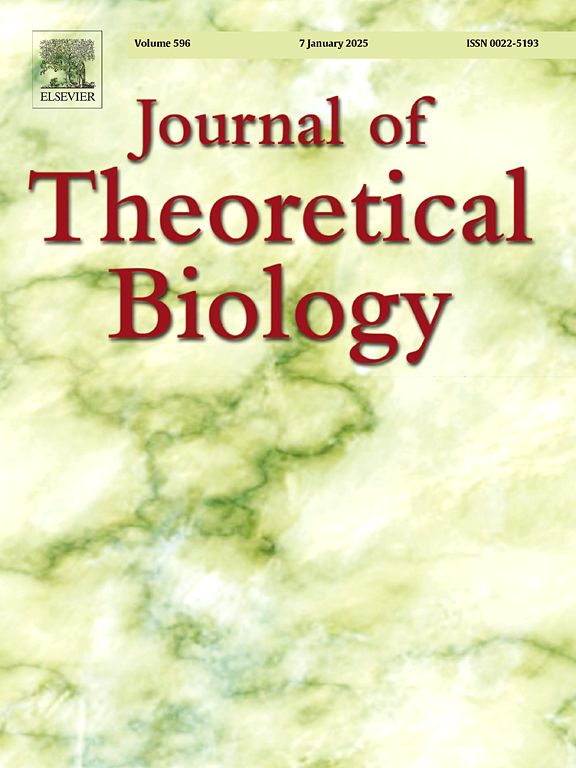结局选择对疫苗剂量分配的影响:一项模型研究。
IF 1.9
4区 数学
Q2 BIOLOGY
引用次数: 0
摘要
背景:在大流行的早期阶段,疫苗推广战略通常以减轻卫生保健服务负担和/或死亡为基础。质量调整寿命年数通常不被考虑在内。以COVID-19为例,我们使用数学模型来研究当生命年数是重点而不是死亡时,疫苗分配的最佳策略是如何受到影响的,特别是单剂还是双剂优先更有效。方法:我们扩展了先前发表的一个模型,以估计在疫苗推出之初,在英格兰接种一剂或两剂COVID-19疫苗计划后节省的生命年数和避免的死亡人数。我们纳入了对不同人群因COVID-19导致的死亡风险和疫苗接种水平的最新估计。结果:疫苗剂量分配策略被认为是最优的,这取决于所关注的结果。对于可用剂量较少的情况(在300万至1000万剂之间),无论结果如何,优先采用一剂策略更为有益。当可用剂量增加到1000万剂以上时,两剂策略在由疫苗有效性和所选结果衡量标准确定的某一点上成为最佳策略。结论:与许多现有COVID-19模型采用的方法关注死亡人数不同,以生命年限为目标可能导致不同的疫苗接种政策被认为是最佳的。我们认为,除了感染、住院和死亡之外,生命年损失应该被视为未来疫苗计划发展中疾病影响的主要衡量标准。本文章由计算机程序翻译,如有差异,请以英文原文为准。
The effect of outcome choice on vaccine dose allocation: a modelling study
Background
In the early stages of a pandemic, vaccine rollout strategies are generally based on reducing the burden on healthcare services and/or deaths. Quality-adjusted life-years are often not taken into account. With COVID-19 as an example, we used mathematical modelling to investigate how the optimal strategy for allocating vaccines is affected when life-years are the focus rather than deaths, specifically whether single-dose or two-dose prioritisation is more effective.
Methods
We extended a previously published model to estimate the number of life-years saved and deaths averted following a one-dose or two-dose COVID-19 vaccination schedule in England at the beginning of the vaccine rollout. We included updated estimates for the risk of mortality due to COVID-19 and vaccine uptake levels for different population groups.
Results
The vaccine dose allocation strategy considered optimal changed depending on the outcome of interest. For lower numbers of available doses (between three and ten million), it was more beneficial to prioritise the one-dose strategy, regardless of the outcome. As the number of available doses increased above ten million, the two-dose strategy became optimal at a point determined by the vaccine effectiveness and the chosen outcome measure.
Conclusions
Rather than focussing on deaths, which is the approach taken in many existing COVID-19 models, targeting life-years can lead to different vaccination policies being considered optimal. We argue that – alongside infections, hospitalisations and deaths – life-years lost should be regarded as a primary measure of disease impact in the development of future vaccine programmes.
求助全文
通过发布文献求助,成功后即可免费获取论文全文。
去求助
来源期刊
CiteScore
4.20
自引率
5.00%
发文量
218
审稿时长
51 days
期刊介绍:
The Journal of Theoretical Biology is the leading forum for theoretical perspectives that give insight into biological processes. It covers a very wide range of topics and is of interest to biologists in many areas of research, including:
• Brain and Neuroscience
• Cancer Growth and Treatment
• Cell Biology
• Developmental Biology
• Ecology
• Evolution
• Immunology,
• Infectious and non-infectious Diseases,
• Mathematical, Computational, Biophysical and Statistical Modeling
• Microbiology, Molecular Biology, and Biochemistry
• Networks and Complex Systems
• Physiology
• Pharmacodynamics
• Animal Behavior and Game Theory
Acceptable papers are those that bear significant importance on the biology per se being presented, and not on the mathematical analysis. Papers that include some data or experimental material bearing on theory will be considered, including those that contain comparative study, statistical data analysis, mathematical proof, computer simulations, experiments, field observations, or even philosophical arguments, which are all methods to support or reject theoretical ideas. However, there should be a concerted effort to make papers intelligible to biologists in the chosen field.

 求助内容:
求助内容: 应助结果提醒方式:
应助结果提醒方式:


